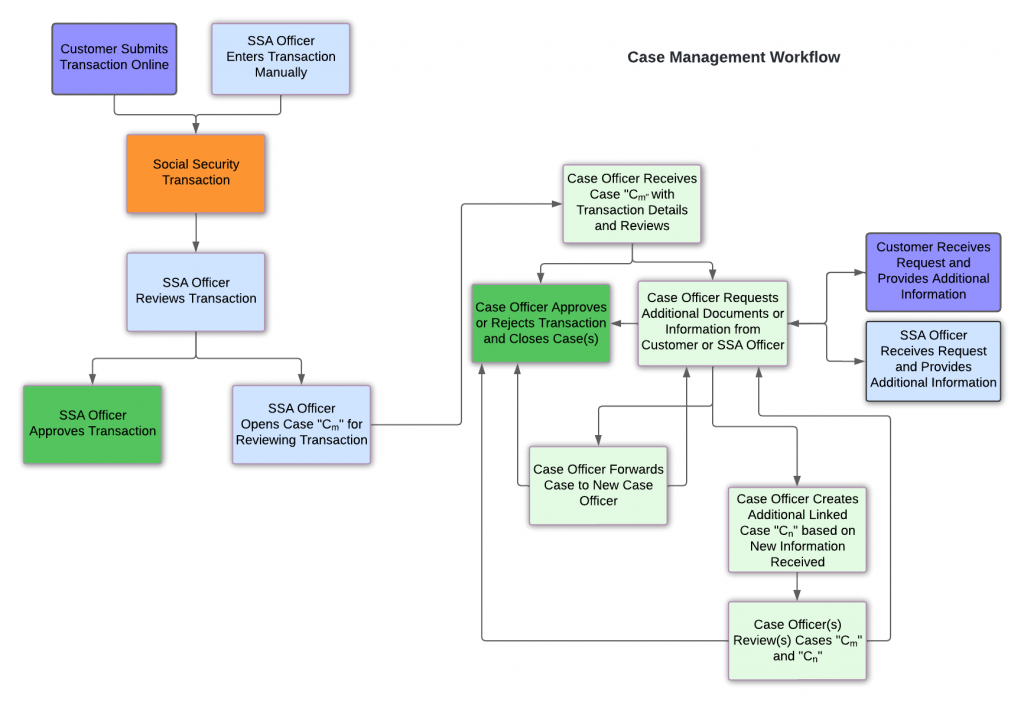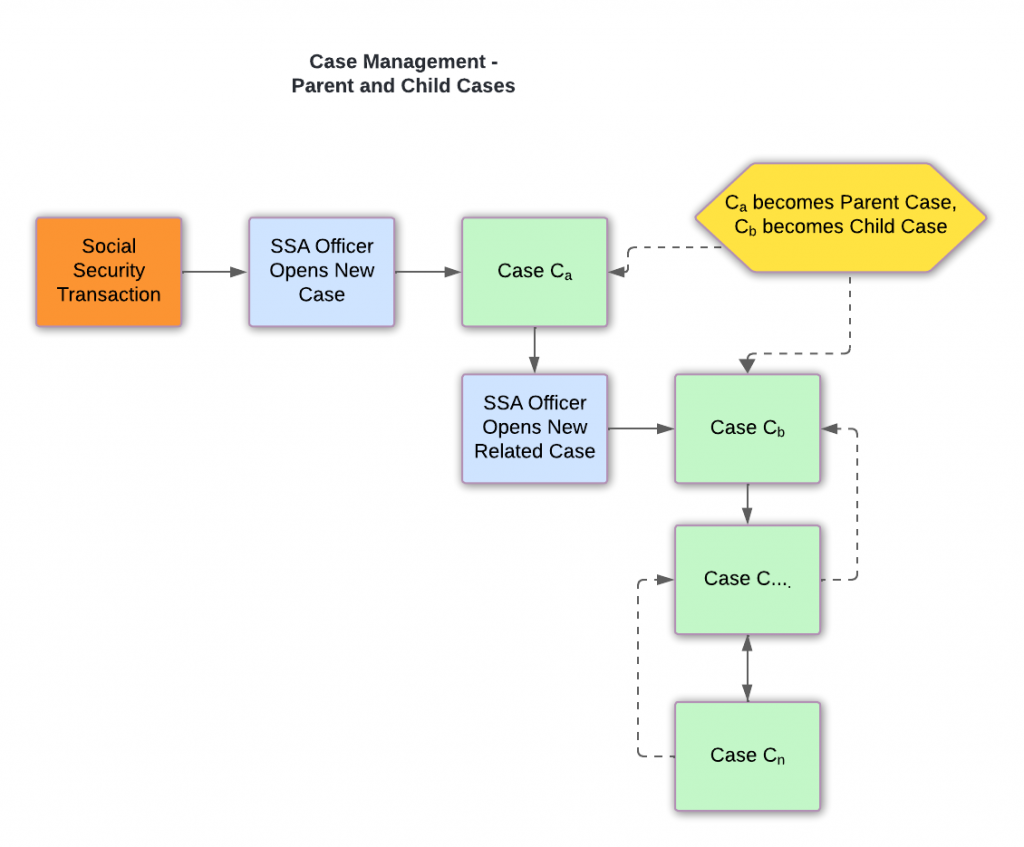In any country, the administration of social security systems requires careful tracking and oversight to ensure that registrations, employer and individual records, contributions, benefits, and compliance processes are effectively managed. One of the most vital tools for ensuring this is case management, a structured process used to manage, monitor, and resolve issues that arise in the administration of social security benefits and obligations. Here, we will explore what case management is, why it is crucial, and how the Interact SSAS system handles this aspect in detail, providing a framework for efficient management of social security processes.
What Is Case Management in Social Security?
Case management in social security administration refers to the systematic handling of individual cases related to registration, benefits, contributions, compliance, and legal matters. Each case represents an issue that needs to be addressed, whether it is a beneficiary applying for medical benefits for which they are ineligible, an employer failing to pay contributions on time, or a discrepancy that needs further investigation.
Key Aspects of Case Management:
- Tracking: Every case is documented from start to resolution, including the actions taken and the outcome.
- Investigation: Cases often require gathering additional information, investigating claims, and reviewing relevant documents.
- Coordination: Cases are typically handled by a range of personnel within the social security administration, requiring coordination between departments such as compliance, contributions, and benefits.
- Resolution: Ultimately, the goal of case management is to resolve the issue, whether by approving a benefit, collecting delinquent payments, or resolving compliance violations.
Importance of Case Management
Effective case management ensures that all cases are handled consistently and fairly. In a social security system, this is particularly important because it ensures:
- Timely Benefits: Without a system in place, beneficiaries may face delays in receiving critical benefits such as pensions or medical assistance.
- Regulatory Compliance: Case management ensures that employers and beneficiaries adhere to social security laws, helping to prevent fraud and evasion.
- Fairness and Accountability: Cases are tracked transparently, ensuring that decisions can be reviewed and that no individual or organization is treated unfairly.
Examples of Case Management
- Benefit Application Case: A retiree applies for social security benefits but something seems off about the records underlying the benefit application, including discrepancies in contribution history. A case is opened to investigate further whether the underlying data is correct and additional data and documents are requested to review the information backing up the claim.
- Employer Compliance Case: An audit reveals that an employer has failed to pay the required contributions. A case is opened to track the investigation, communication with the employer, and the eventual resolution (whether through payment or legal action).
- Medical Benefit Claims: A worker injured on the job submits a claim for employment injury benefits. The medical certificate accompanying the claim is identical to several other medical certificates received over the past 3 months from the same healthcare provider for other cases. A case is opened and assigned to a case officer specialized in reviewing medical dossiers to investigate further if this medical injury claim and others supported by the same healthcare provider are all genuine.
Why Case Management is Needed
Every country, regardless of its economic or social context, benefits from having a structured case management system in its social security administration. Here’s why:
- Uniform Treatment: Social security systems are often large, dealing with millions of beneficiaries. Case management ensures that everyone is treated uniformly when an investigation is launched, avoiding bias or inefficiencies.
- Complexity of Cases: Social security cases can be complex, involving contributions, benefit eligibility, medical assessments, and legal compliance. A formal system is essential to handle this complexity effectively and to process the relevant data and documents transparently.
- Legal Accountability: Many cases involve legal issues, such as disputes over contribution payments or eligibility for benefits. Case management ensures that these legal aspects are handled properly and that decisions are documented for future reference.
- Efficiency: Without case management, social security systems would be prone to delays, errors, and miscommunication between departments. A structured system ensures that issues are resolved quickly and fairly.
What Happens Without Case Management?
If a social security administration lacks a case management system, several negative consequences can arise:
- Delayed Payments: Beneficiaries may experience delays in receiving their entitled benefits due to disorganization.
- Increased Fraud: Without a systematic way to track cases, it becomes easier for individuals or employers to commit fraud or evade compliance.
- Legal Disputes: Cases that are not properly managed may lead to legal challenges, creating unnecessary backlogs in the judicial system.
- Inefficiency: The administration may become overwhelmed with unresolved cases, leading to a breakdown in service delivery.
Case Management in Interact SSAS
The Interact SSAS system offers a comprehensive case management framework that supports the social security administration in managing its diverse and complex cases. Below is a detailed breakdown of how case management is handled within the system and how it contributes to compliance and operational efficiency.
Features of Case Management in Interact SSAS
- Opening and Tracking Cases for any Transaction: Any social security officer can open a case for a variety of reasons and for any transaction processed in the social security administration system—such as registrations, contributions or payments, benefit claims, compliance audit findings or delinquency issues. Each case is assigned a unique identifier, ensuring it is tracked through the system until resolution.
- Integration with Other Modules: Case management in Interact SSAS is deeply integrated with other core functions, such as registration, contribution filing, benefit payments, and compliance. This integration ensures that cases can easily be triggered when anomalies are detected and there will be no need to re-key information to document the case when the information is already in the system.
- Document Management: The system manages all documents related to the case, ensuring that evidence and records are stored in a centralized, accessible location. This is crucial for audits, compliance reviews, and legal actions. A case officer can at any time request additional documents either from external stake holders or internally. When configuring the Case management framework, the user can identify all relevant document types which should be included in the Case Management processes so these can easily be requested by the various Case Officers.
- Case Notes and Information Management: On top of additional documents which may be requested by a Case Officer, the system also allows the Case Officer to request additional data or information through the system. All information and documents related to a specific case will be available to the Case Officer and anyone authorized to access them. Copious Case Notes are kept and if the Case is forwarded to another Case Officer, the same Case Notes can be reviewed by this Case Officer, avoiding any information “falling through the cracks”.
- Workflow & Approval: The case management module has a customizable workflow that supports the assignment and approval process. For example, a case may require multiple reviews and approvals before a decision can be finalized. Users can reassign cases to different officers, ensuring that cases move through the correct channels for resolution. Standard workflow includes different review and approval levels for Case Officer, Case Supervisor and Case Manager.
- Compliance and Legal Action: One of the key benefits of Interact SSAS is the seamless link between case management and compliance. Cases that involve non-compliance or fraud can quickly be escalated to legal action. For instance, if an employer fails to correct compliance issues, the assigned case officer can forward the case to legal officers, who can take further action.
- Inter-Case Relationships: The system supports parent-child case relationships, allowing complex cases with multiple facets to be linked together. This feature ensures that related cases are managed cohesively, avoiding duplication of effort. One case may lead to the uncovering of other matters which require cases of their own, so the parent case will lead to additional child cases.
- Case Forwarding: If a specific case turns out to require different specialist knowledge or if the workload of one case officer is too much to be able to properly investigate and resolve an existing case, the case can be forwarded to another case officer. This way the right case officers are assigned to the right cases and a case officer can always choose to involve others apart from requesting additional data or documentation to help resolve a case.
- Reporting and Monitoring: Interact SSAS includes comprehensive reporting tools that allow administrators to monitor the status of cases, track key metrics, and identify bottlenecks in the case resolution process. This ensures transparency and accountability.
Conclusion
Case management is essential for the efficient operation of any social security administration, providing a structured approach to handling complex cases, ensuring compliance, and protecting the integrity of the system. With Interact SSAS, social security organizations can take advantage of a powerful, integrated case management framework that not only streamlines processes but also enhances compliance and transparency. This ensures that beneficiaries receive their entitled services in a timely manner, and organizations can effectively enforce social security laws across all sectors.


